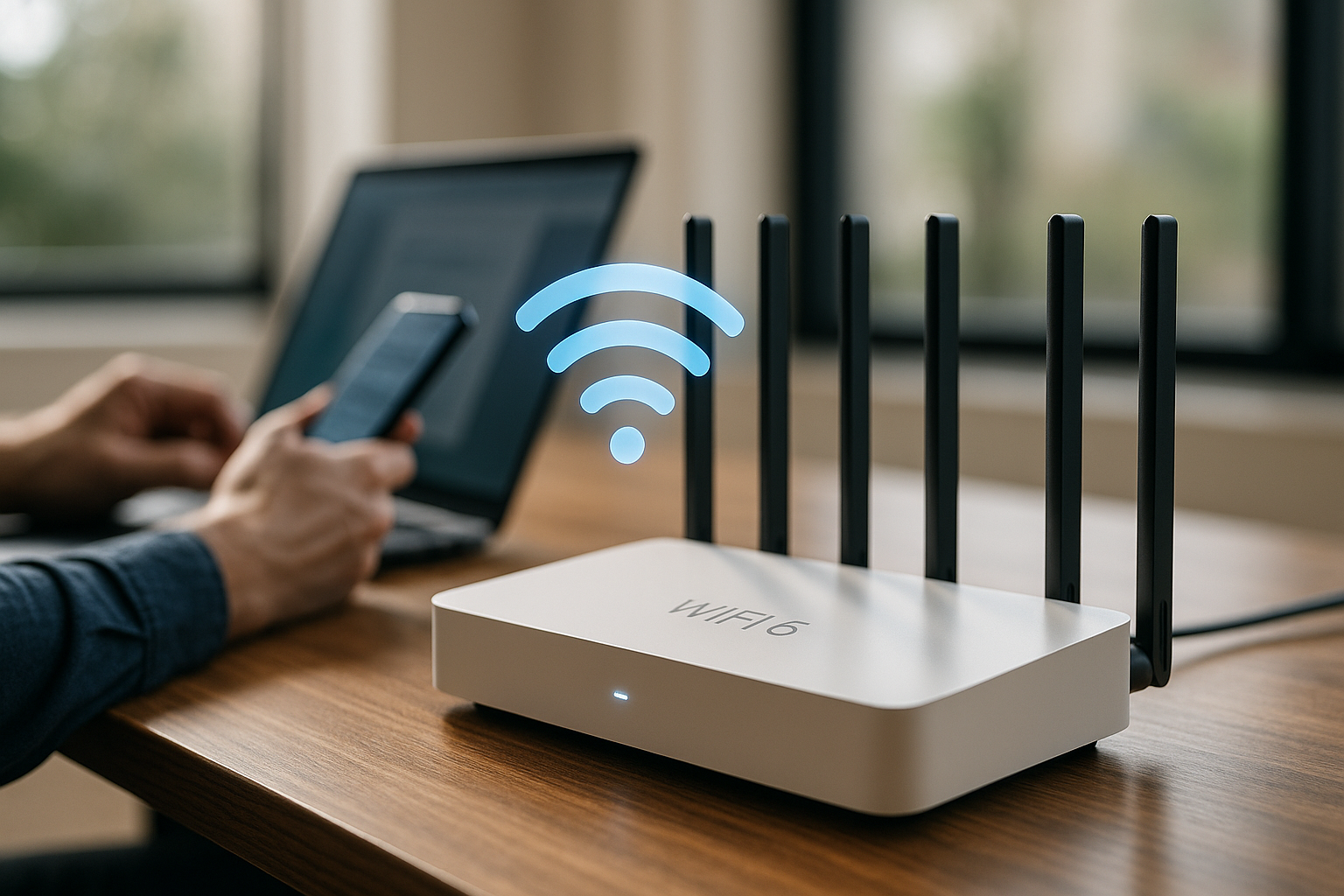Decoding the Impact of Wi-Fi 6 on Future Connectivity
The advent of Wi-Fi 6, otherwise known as 802.11ax, has heralded a new era in the telecommunications industry. This latest evolution in wireless standards promises to transform the way we interact with technology, offering a more reliable and powerful connection than ever before. But what exactly is Wi-Fi 6, and how could it reshape our digital landscape?

Wi-Fi 6 is the latest generation of Wi-Fi technology, designed to improve speed, increase efficiency, and reduce congestion in heavy bandwidth usage scenarios. Its development marks a significant leap forward in our quest for faster, more reliable wireless connectivity—and it’s set to change the game for businesses and individuals alike.
Tracing the Technological Progression
The history of Wi-Fi technology is a testament to our relentless drive for better connectivity. Since the introduction of the first Wi-Fi standard, 802.11, in 1997, each subsequent generation has brought significant improvements in speed and reliability. Wi-Fi 4 (802.11n) introduced MIMO (Multiple Input, Multiple Output) technology, enabling multiple antennas to send and receive data simultaneously. Wi-Fi 5 (802.11ac) doubled the maximum number of MIMO streams and introduced channel width for faster data transmission.
Wi-Fi 6, however, promises to be a game-changer. It introduces several new technologies designed to improve network capacity, speed, and efficiency, particularly in high-density environments. These include OFDMA (Orthogonal Frequency Division Multiple Access), which allows for more simultaneous connections, and Target Wake Time, which improves network efficiency and extends battery life of connected devices.
The Implications of Wi-Fi 6
The introduction of Wi-Fi 6 has far-reaching implications for the telecom industry and beyond. Its enhanced capabilities make it ideally suited to meet the growing demand for high-bandwidth applications, such as VR and 4K video streaming. It also holds significant promise for the future of smart homes and cities, where a multitude of devices will need to connect seamlessly and efficiently.
For businesses, Wi-Fi 6 could revolutionize operations. The increased network capacity and efficiency could enable more reliable and robust connections, supporting everything from large-scale data transfers to real-time collaboration.
Overcoming Challenges
Despite its many advantages, the implementation of Wi-Fi 6 also presents some challenges. For one, it requires new hardware, both for the access points and the devices connecting to them. This could mean significant investment for businesses and public institutions looking to upgrade their networks.
Moreover, while Wi-Fi 6 is designed to operate in congested environments, it may not entirely eliminate network congestion, particularly in areas with a high density of devices.
The Future of Connectivity
The emergence of Wi-Fi 6 represents a significant milestone in the evolution of wireless technology. Its potential to support a more connected, efficient, and dynamic digital landscape is immense. However, as with any technological advancement, its successful implementation will require careful planning, strategic investment, and ongoing research and development.
In the rapidly evolving world of telecommunications, Wi-Fi 6 serves as a powerful reminder of our potential to innovate and adapt in the pursuit of better connectivity. It offers a glimpse into a future where our digital and physical worlds are more seamlessly integrated than ever before—a future that is not just about faster speeds, but also about greater efficiency, reliability, and the ability to connect more devices simultaneously.
By staying abreast of such advancements, individuals and businesses can position themselves to harness the full potential of future connectivity, navigating the challenges and opportunities that lie ahead with confidence and foresight.




